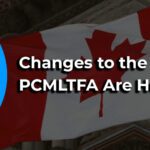
The Future of AML Compliance: Trends and Regulatory Changes in 2025
February 21, 2025
Changes to the PCMLTFA Are Here- Part 2
February 28, 2025As financial crime evolves, so do the regulations designed to combat it. In 2025, significant amendments to Canada’s Proceeds of Crime (Money Laundering) and Terrorist Financing Act (PCMLTFA) are set to impact financial institutions, fintech companies, and businesses operating in regulated sectors. Understanding these changes is essential for maintaining compliance and avoiding penalties.
Overview of the PCMLTFA
The PCMLTFA is Canada’s primary legislation for combating money laundering and terrorist financing. Enforced by the Financial Transactions and Reports Analysis Centre of Canada (FINTRAC), the act imposes strict compliance obligations on financial institutions, money services businesses (MSBs), and other regulated entities. Recent enforcement actions highlight the importance of adhering to these regulations, as non-compliance can lead to significant penalties.
Key compliance requirements under the PCMLTFA include:
- Customer due diligence (CDD) & Know Your Customer (KYC)
- Suspicious transaction reporting (STR)
- Enhanced due diligence (EDD) for high-risk clients
- Record-keeping obligations
- Politically exposed persons (PEP) screening
With new threats emerging, the 2025 amendments introduce further refinements to these areas.
Key 2025 Amendments
The latest changes to the PCMLTFA focus on enhancing transparency, expanding compliance obligations, and incorporating emerging technologies. Some of the most notable updates include:
- Expansion of Reporting Requirements
- Businesses must report a broader range of transactions, including certain high-risk crypto transactions and international payments.
- Lowered reporting thresholds for electronic funds transfers (EFTs) to increase monitoring effectiveness.
- Strengthened Beneficial Ownership Requirements
- More stringent verification rules for identifying ultimate beneficial owners (UBOs).
- Additional documentation requirements to prevent corporate structures from being used for illicit finance.
- Enhanced Due Diligence (EDD) for High-Risk Sectors
- New risk assessment guidelines for fintech companies, virtual asset service providers (VASPs), and crowdfunding platforms.
- Mandatory ongoing monitoring for businesses dealing with high-risk clients and jurisdictions.
- Integration of AI & RegTech Solutions
- Encouragement of artificial intelligence (AI) and regulatory technology (RegTech) for transaction monitoring and fraud detection.
- FINTRAC may require institutions to demonstrate AI-powered compliance capabilities in certain cases.
- Stricter Penalties for Non-Compliance
- Higher fines for violations, including failure to report suspicious transactions.
- More frequent compliance audits and enforcement actions.
Implications for Financial Institutions & MSBs
These updates increase the regulatory burden on banks, payment providers, and MSBs. Companies must:
- Implement advanced transaction monitoring tools to meet expanded reporting obligations.
- Enhance staff training to recognize and respond to suspicious activities under the new standards.
- Improve KYC and beneficial ownership verification processes to align with stricter rules.
Strengthened Reporting Obligations
The 2025 amendments include updates to transaction reporting requirements:
- Lowered EFT Reporting Thresholds: Financial institutions and MSBs must now report EFTs above $5,000 CAD (previously $10,000 CAD) to FINTRAC.
- Crypto Transactions: New mandatory reporting for large virtual asset transactions, particularly those involving cross-border transfers.
- Suspicious Activity Reporting: Stricter timelines for submitting STRs, requiring businesses to file within 24 hours of detection.
Compliance Best Practices
To stay compliant with the evolving PCMLTFA landscape, businesses should adopt the following strategies:
- Implement Advanced Compliance Technologies
- Leverage AI and machine learning for risk-based transaction monitoring.
- Use blockchain analytics for detecting suspicious crypto transactions.
- Strengthen Internal Controls & Policies
- Update AML policies to reflect new risk categories and reporting requirements.
- Conduct regular compliance audits to ensure adherence to FINTRAC guidelines.
- Enhance Employee Training Programs
- Provide continuous AML/KYC training on best practices and emerging financial crime risks.
- Educate staff on how to identify high-risk transactions under the revised PCMLTFA.
Conclusion
With significant changes to the PCMLTFA taking effect in 2025, financial institutions and MSBs must be proactive in updating their compliance frameworks. By implementing advanced technologies, strengthening due diligence processes, and enhancing internal controls, businesses can navigate these changes effectively.
Stay tuned for Part 2, where we will explore additional regulatory updates and their impact on businesses.
For expert compliance guidance, partner with Paycompliance and ensure your business meets the latest regulatory requirements.
Need more clarity on compliance terms? Check out our full glossary.
Sources:



